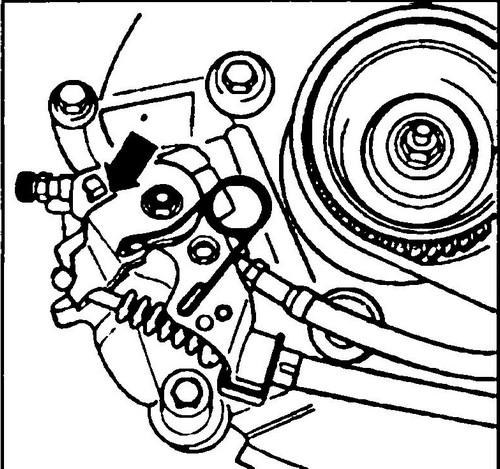Parking brake
The parking brake device T4 conveyor is shown in fig. 454. All work related to the parking brake can be performed on the basis of this figure.
Rice.
454 Parking brake device 1 - handle pad, 2 - cover, 3 - mechanism pad, 4 - button, 5 - return spring, 6 - spring seat, 7 - release lever, 8 - latch, 9 - nuts, 10 - lever, 11 - bolts; 12 - nuts; 19 - adapter, 20 - adjusting nut, 21 - cable (models with a platform), 22 - cable (other models), 23 - rocker
To remove the brake lever holder (3), push down the tab on the bottom.
Then pull the holder forward. The nut (12) is self-locking and must be replaced after each unscrewing.
The gear segment is installed only in vehicles with a right-hand drive.
In vehicles with left-hand drive, a toothed segment (15) is installed, secured with nuts (14). These nuts are self-locking and must be replaced if they have been loosened. Tighten new nuts to 25 Nm. Rod (19) is not installed in all vehicles.
To replace the parking brake cable, the brake pads must be removed.
After replacing the cable, the parking brake must be adjusted.
Features of the design of the hand brake drive - models with rear disc brakes
When installing disc brakes on the rear axle, the design and principle of operation of the parking brake drive changes.
As a rule, a T-shaped lever is installed on the rear (in relation to the wheel) surface of the caliper, which has a mechanical (eccentric) drive to the caliper piston, i.e. when the lever is turned, the piston extends not under the action of hydraulic pressure, but under the action of the drive eccentric. Adjusting the parking brake actuator
♦ Turn the adjusting nut (20, see Fig. 454) to ensure a gap of no more than 1 mm between the actuator lever on the caliper and its stop (see Fig. 455). This will ensure the tension of the cable.
Rice. 455. Parking brake lever - models with rear disc brakes.
♦ Apply and release the vehicle's handbrake. Check if the wheels are free.

